I present to you our collection of Venezuelan banknotes (Part 2 - Banknotes from 2008 to 2018) [ Eng / Esp ]
Versión en español más abajo
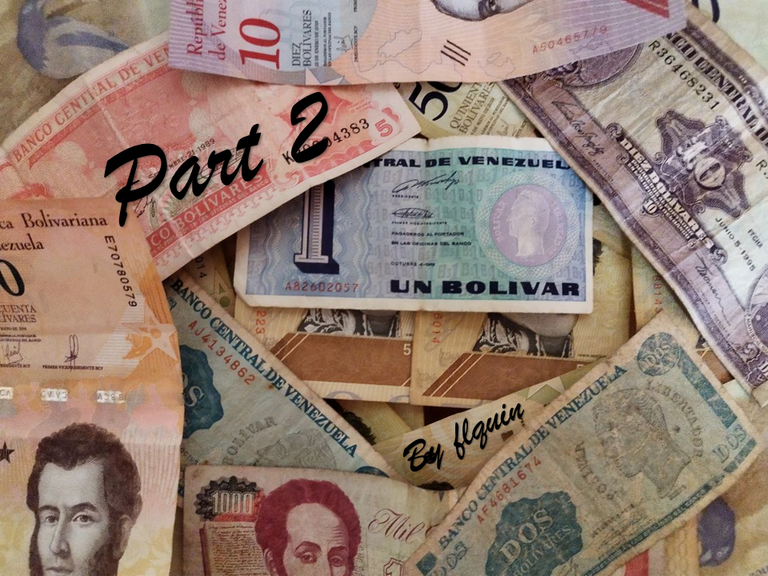
Greetings again community!
As promised, I came with another part of my collection of Venezuelan banknotes, sorry for the delay.
I noticed from the previous post, that a lot of those feelings of longing for the past, not only I manifested it, but, several others. That was a great joy and I suppose this is not only because of the banknotes, but because of the particular memories that those notes trigger.
Well, my previous post about Venezuelan banknotes, had closed with the arrival of a new cone to be established in Venezuela in 2008. Although sometimes new things cause a lot of excitement, in the economic aspect, it can be a bit delicate. This cone generated a lot of controversy. Perhaps, many will agree that this new direction of the national currency was somewhat strange and on this date, it seems to me that there was a before and an after for Venezuelans. I say this mainly because after this moment Venezuelans began to become more aware of money, of the economy, and of what was happening in the country.
The arrival of this new cone, not only would be established with a new face and lively colors, but with the reduction of three zeros. As I mentioned, bills of 1000, 2000, 5000 Bolívares... would be reduced to 1, 2, 5 Bolívares fuertes.
Let's see those bills, shall we?
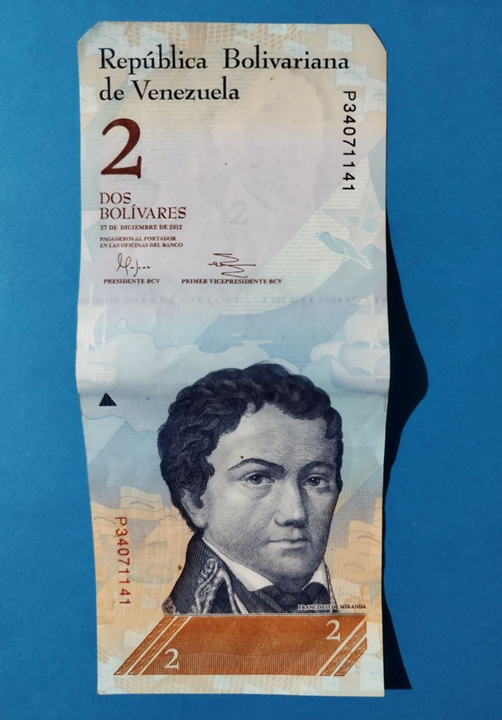
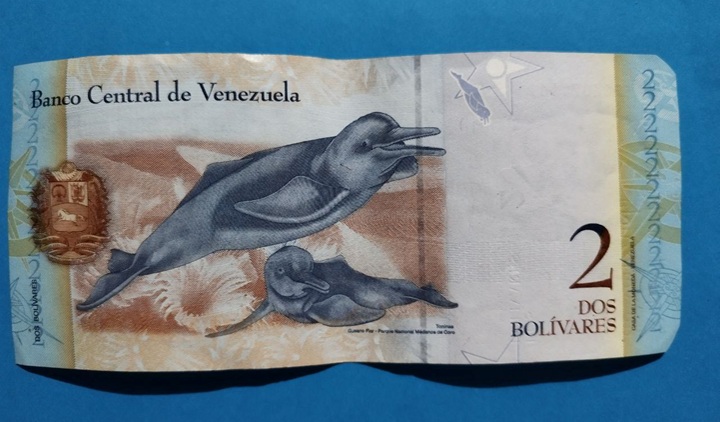
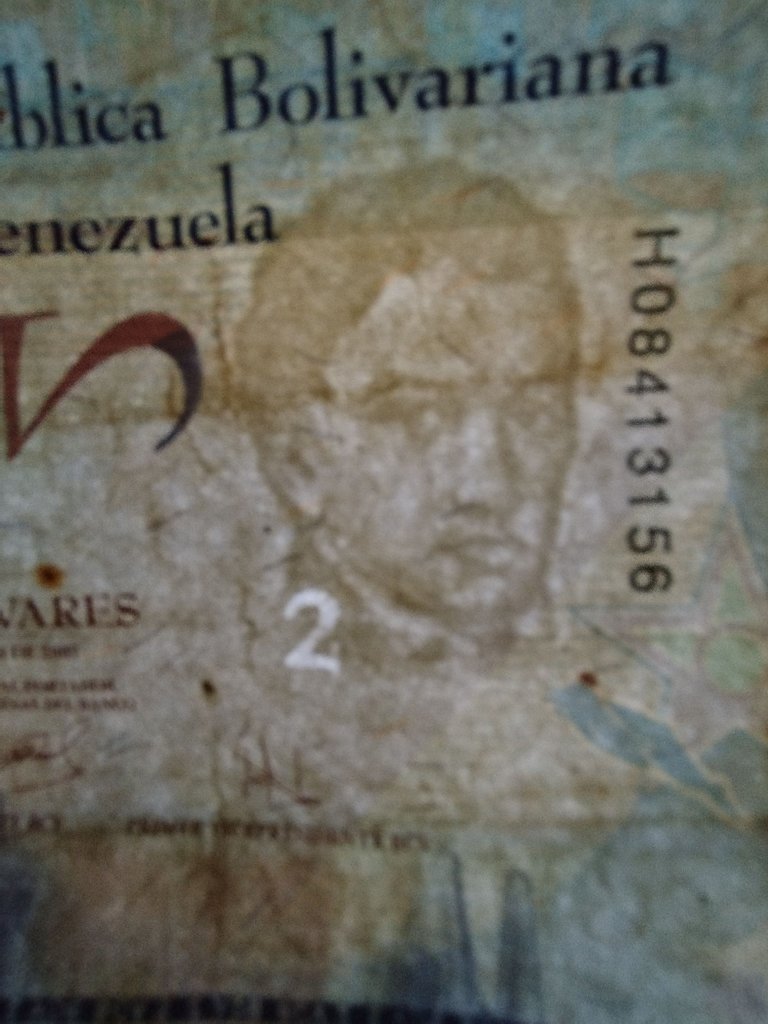
The 2 Bolívares Fuertes banknote has the image of Francisco de Miranda, on the back it has some Toninas and a flower worm in the Médanos de Coro National Park, accompanied by the national coat of arms.
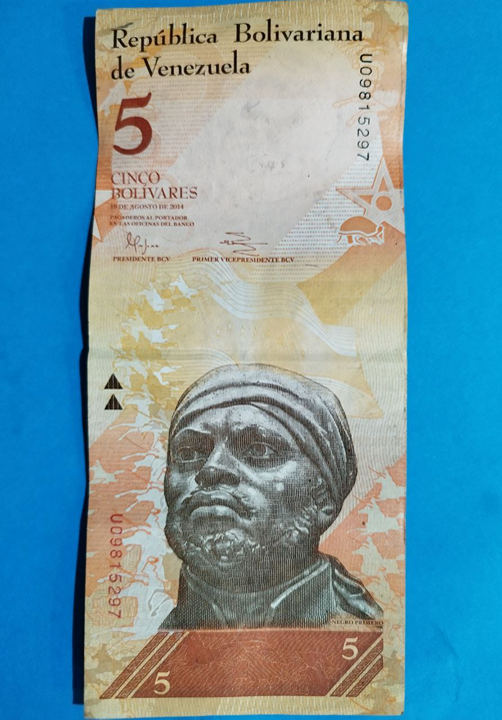
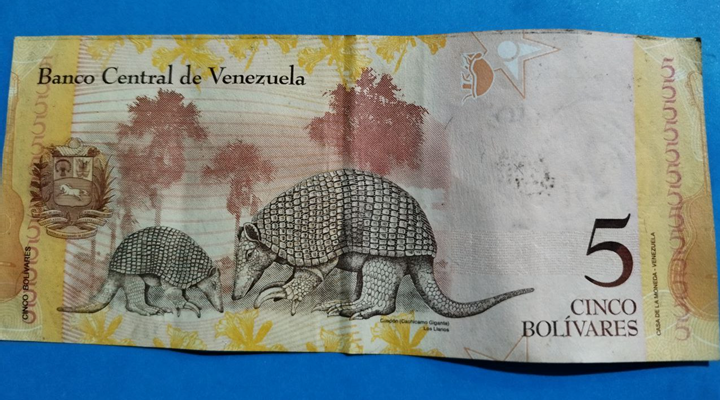
The 5 BsF bill has the image of Pedro Camejo (Negro Primero), on the back, you can see Cuspón (Cachicamo Gigante) in Los Llanos and the national coat of arms.
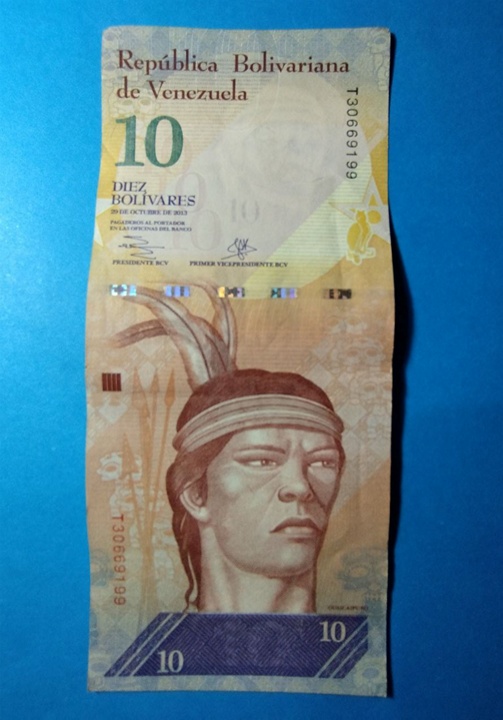
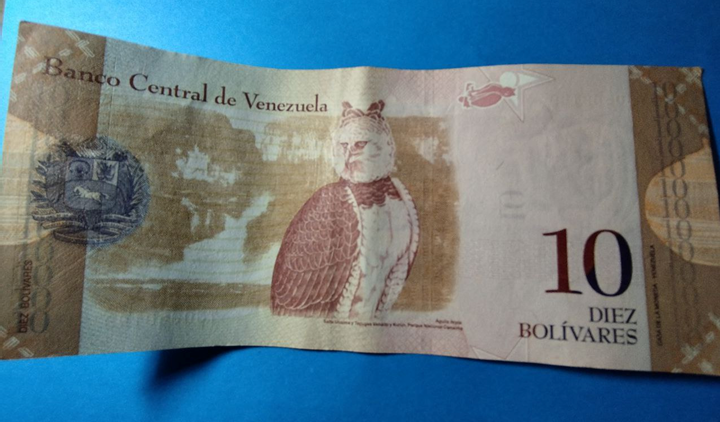
The 10 BsF bill has the image of Cacique Guaicapipuro and on the reverse side, you can see the Harpy Eagle in the Ucaima and Tepuyes Venado and Kurún Falls in Canaima National Park and the national coat of arms.
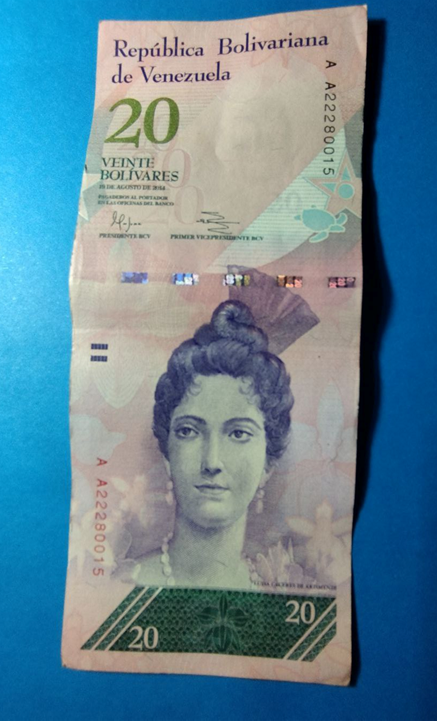
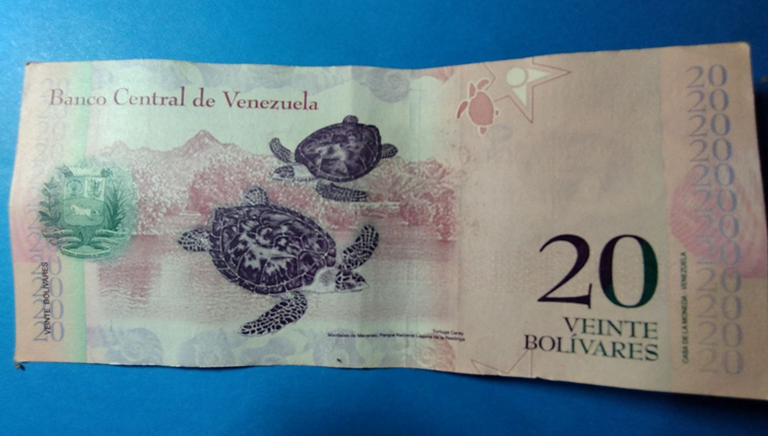
The 20 BsF bill has the image of Luisa Cáceres de Arismendi, on the back, you can see the Hawksbill turtles in the Macanao Mountains, Laguna de la Restinga National Park and the national coat of arms.
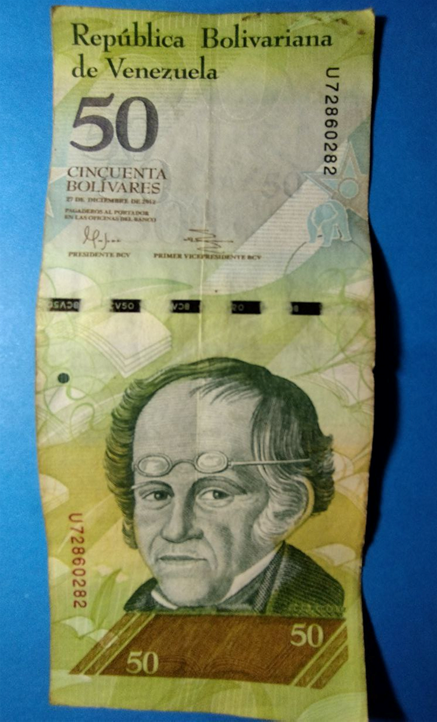
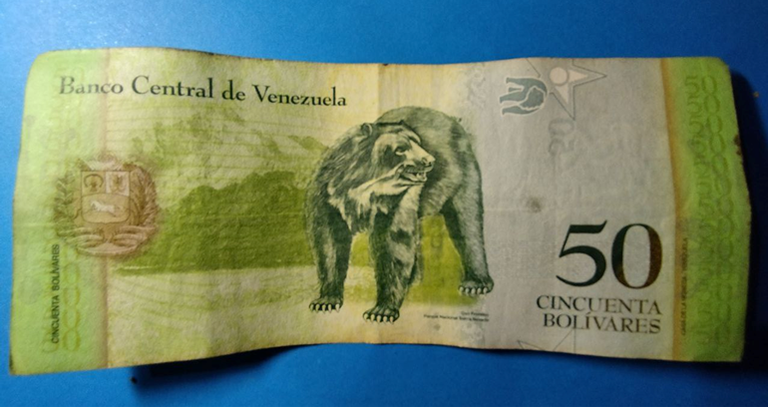
The 50 BsF bill has the face of Simón Rodríguez, on the back it has the shape of the Frontino Bear in the Sierra Nevada National Park and the national coat of arms.
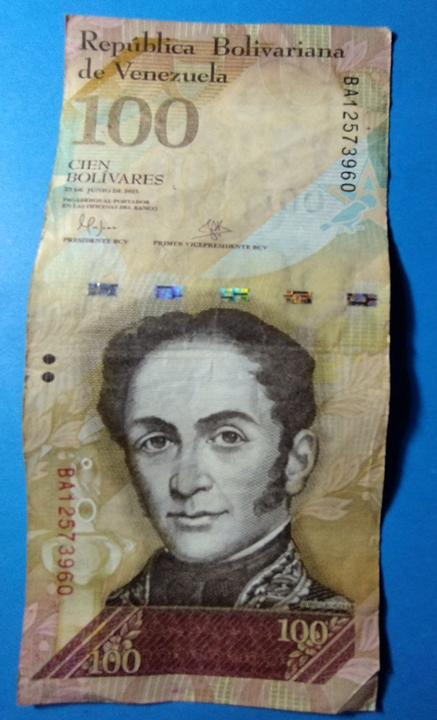
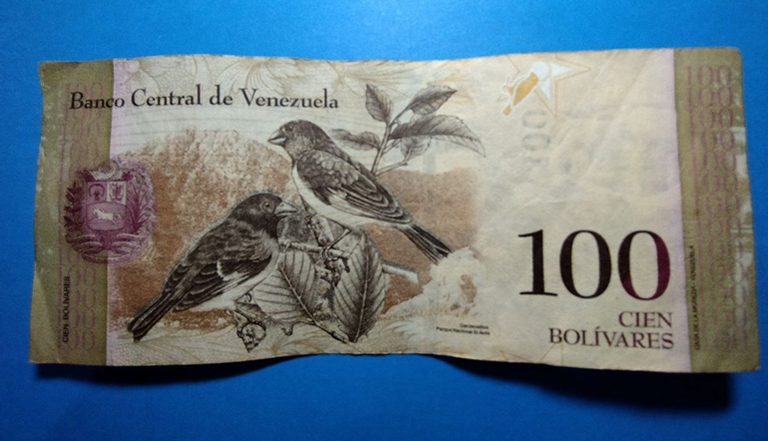
The 100 BsF bill has the face of Simón Bolívar, on the back, you can see the Cardenalitos in El Ávila National Park and the national coat of arms.
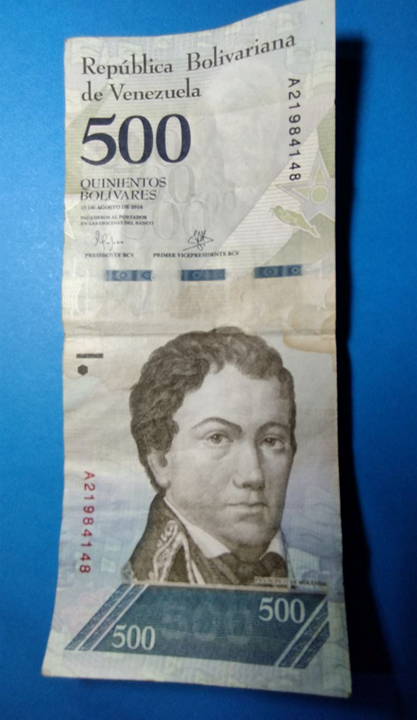
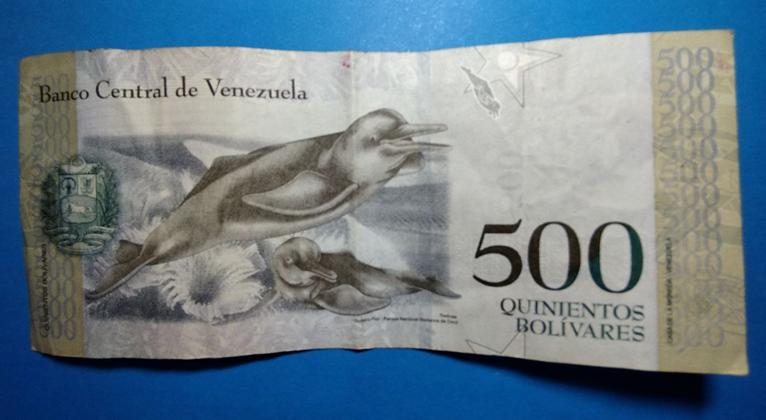
The 500 BsF bill has the face of Francisco de Miranda, on the back it shows the Toninas and the flower worm in the Médanos de Coro National Park and the national coat of arms.
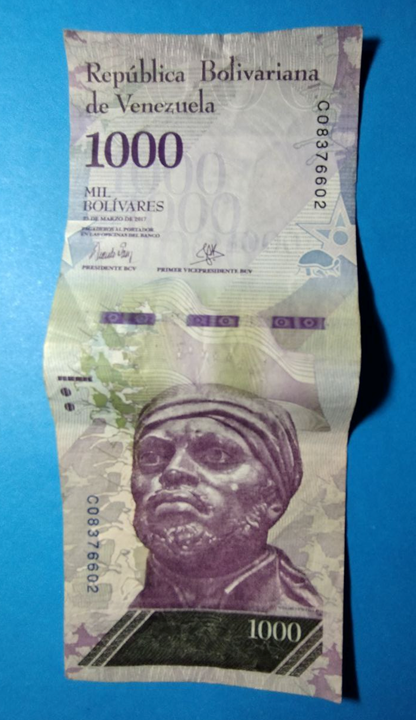
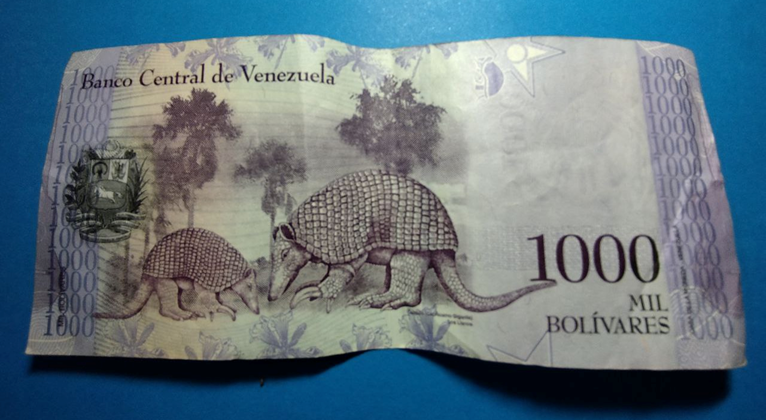
The 1000 BsF bill has the face of Pedro Camejo, on the back, you can see Cuspón (Cachicamo Gigante) in Los Llanos and the national coat of arms.
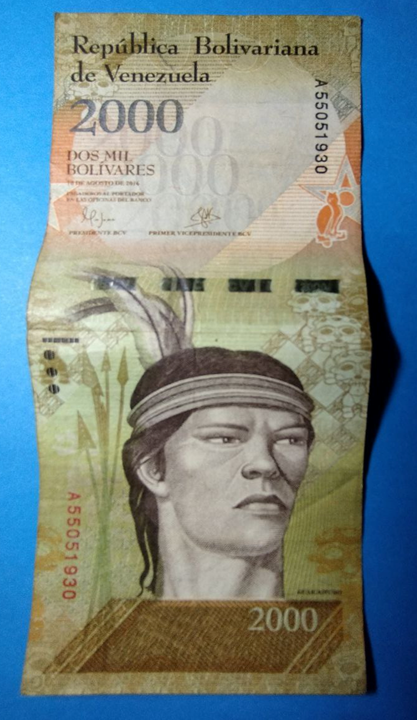
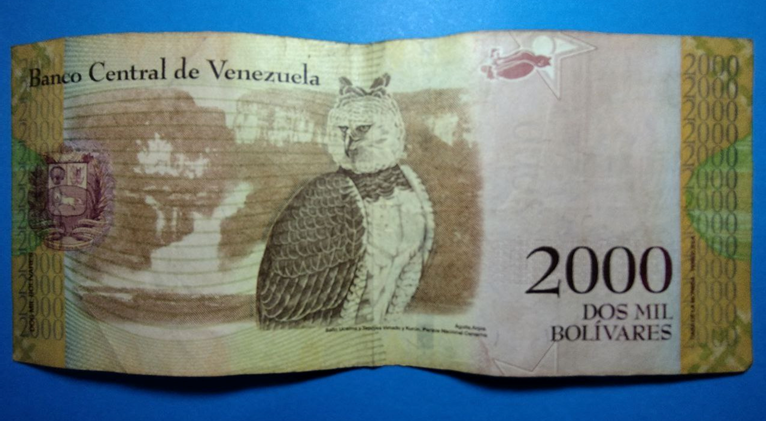
The 2000 BsF bill has the face of Cacique Guaicaipuro, on the back is the Harpy Eagle in Ucaima Falls and Venado and Kurún tepuis in Canaima National Park and the national coat of arms.
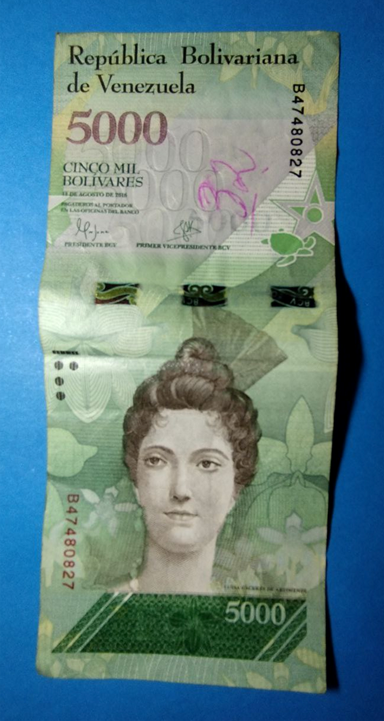

The 5000 BsF banknote has the face of Luisa Cáceres de Arismendi, on the back, you can see the Hawksbill turtles in the Macanao Mountains, Laguna de la Restinga National Park and the national coat of arms.
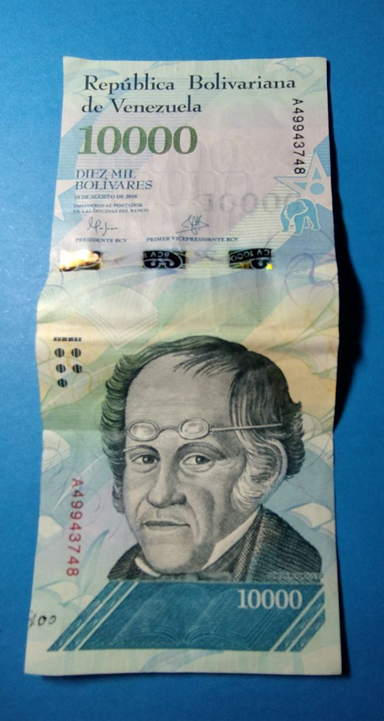
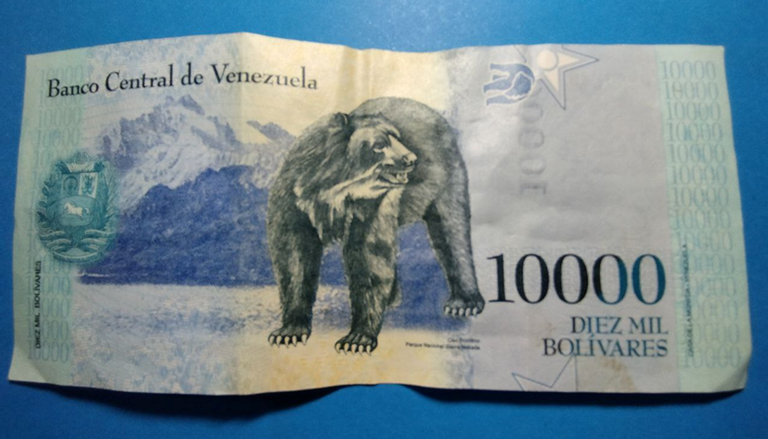
The 10000 bill has the face of Simón Rodríguez, on the back it has the image of the Frontino Bear in the Sierra Nevada National Park and the national coat of arms.
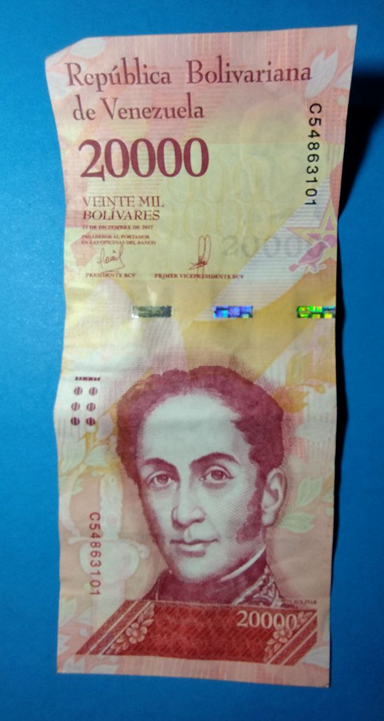
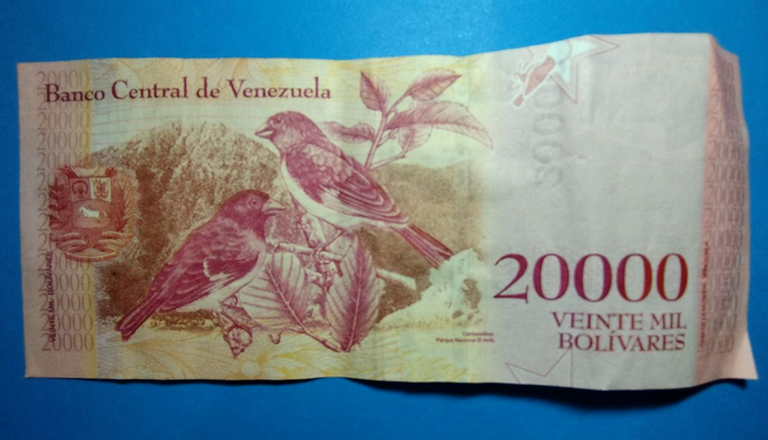
The 20000 banknote shows the face of Simón Bolívar, on the back, you can see the Cardenalitos in El Ávila National Park and the national coat of arms.
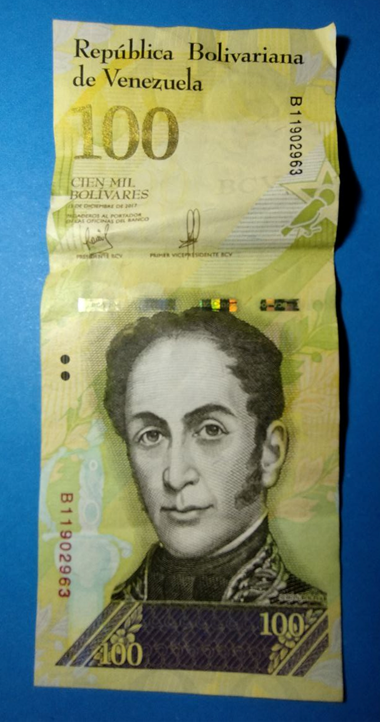
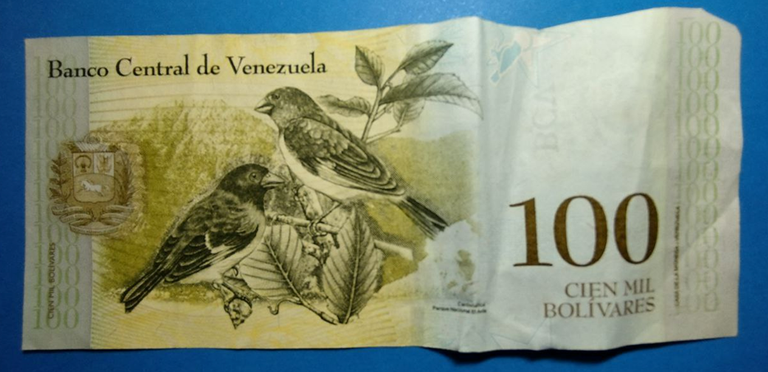
The 100,000 BsF bill has again the face of Simón Bolívar and on the back, you can see the Cardenalitos in El Ávila National Park and the national coat of arms.
Of this cone, the two banknotes of Luisa Cáceres de Arismendi are the ones I liked the most.
One of the peculiarities of this cone is its new vertical appearance. The banknotes are very beautiful, there was a lot of creativity in their development, involving new spaces, characters, and animals representative of Venezuela. The paper is very different from the representative paper banknotes we used to know; you could not feel so much the relief produced in the printing of the images and the paper is lighter.
And, as you may notice, the most noticeable change in the coat of arms is the posture of the horse, which is no longer looking backward while riding, now it is looking forward as if it were ranting. Of course, there are other changes, but not as noticeable, like the updating of the national flag by adding an 8th star and the addition of 4 more ears of corn to the bouquet.
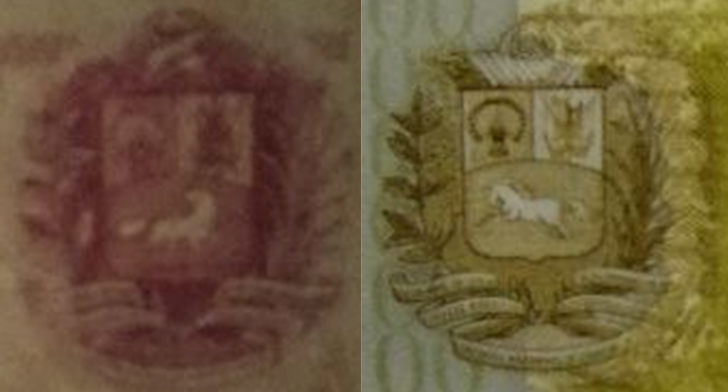
Before and After

As Venezuela had never experienced a monetary reconversion, there was always some confusion. Here I can tell you an anecdote that was a daily occurrence in Venezuela for a long time, even these days, especially because of the resemblance between the bills of one cone and the other.
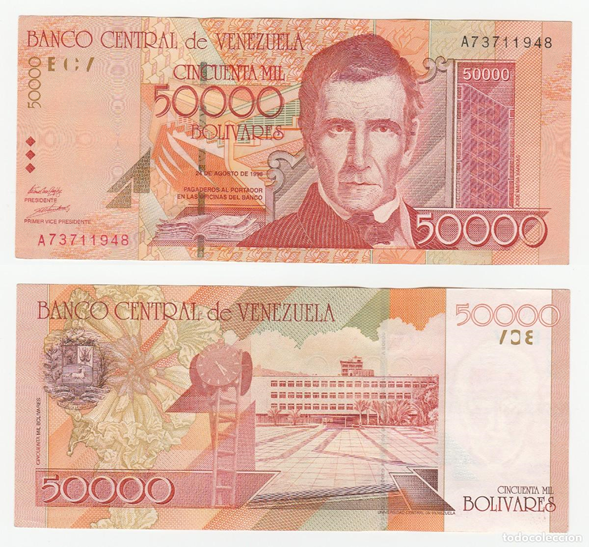
- I was accompanying a classmate to buy some things and at the moment of paying he gave a 10 bolivares fuertes bill, the change he was supposed to receive was 5 bolivares fuertes. But, the girl did not notice that the bill she gave, although it looked like it was not the one she was supposed to give, she was returning a bill of 50,000 bolivares which when transformed translates into about 50 bolivares fuertes. Well, I did not notice the transaction very well. I thought that I was the one who had not seen the bill that my companion gave, so I did not say anything, if I knew I could not say anything either, it was his responsibility if he said it or not. But, on the way out I asked him if she had made a mistake and he said yes...
This cone lasted approximately 10 years. Although the zeros had been reduced, products and services continued to increase in value. Then more bills began to be issued as they were needed and although the streets were full of bills, too many were needed to pay for anything. For example, to pay for a bus fare on a short route you could easily use 10 bills of the highest denomination bill. Then more bills of higher denominations came out, but their fate would be just as cruel.
The inevitable happened, we got to the 100000 bolivar bill, but this time fuertes. In 2018 a new plan was set in motion for the resurgence of a new monetary cone. To implement it, 5 zeros would be removed from the national currency. Then, the 100000 bolivar bill would have the value of 1 bolivar, but now Soberanos and its representation only in coin.
Next week I will be presenting the end of the collection with the sovereign cone banknotes. I hope you liked the presentation. If you have any banknote that you liked, a souvenir or an interesting fact do not hesitate to share it.
See you in a future edition

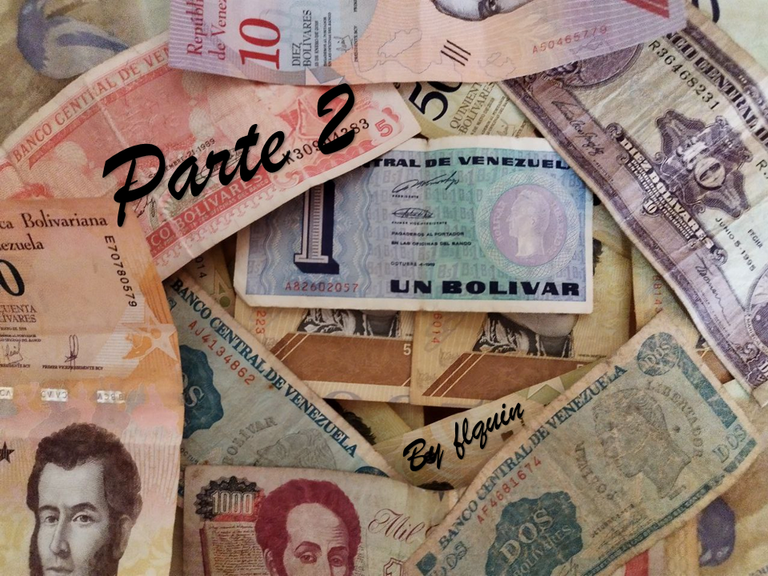
¡Saludos nuevamente comunidad!
Lo prometido es deuda, vengo con otra parte de mi colección de billetes de Venezuela, disculpen la tardanza.
Pude notar del post anterior, que mucho de esos sentimientos de anhelo por el pasado, no sólo lo manifesté yo, sino, varios otros. Eso fue una gran alegría y supongo que esto no es sólo por los billetes, sino por recuerdos en particular que detonan esos papelitos.
Pues bien, mi anterior post sobre billetes de Venezuela, había cerrado con la llegada de un nuevo cono que se establecería en Venezuela en el 2008. Si bien, a veces las cosas nuevas causan bastante emoción, en el aspecto económico, puede ser algo delicado. Este cono, generó muchas polémicas. Tal vez, varios coincidirán en que esta nueva dirección de la moneda nacional, fue algo extraña y en esta fecha, me parece que hubo un antes y un después para los venezolanos. Lo digo principalmente porque después de este momento el venezolano, empezó a agarrar más conciencia sobre el dinero, sobre la economía y de lo que estaba ocurriendo con el país.
La llegada de este nuevo cono, no sólo se establecería con una nueva cara y colores vivaces, sino con la reducción de tres ceros. Como mencioné, billetes de 1000, 2000, 5000 Bolívares… quedarían en 1, 2, 5 Bolívares fuertes.
Veamos esos billetes ¿les parece?



El billete de 2 Bolívares Fuertes tiene la imagen de Francisco de Miranda, en el reverso tiene unas Toninas y un gusano de flor en el Parque Nacional Médanos de Coro, acompañado del escudo nacional.


El billete de 5 BsF tiene la imagen de Pedro Camejo (Negro Primero), en el reverso se aprecia Cuspón (Cachicamo Gigante) en Los Llanos y el escudo nacional.


El billete de 10 BsF tiene la imagen del Cacique Guaicapipuro y en el reverso se aprecia el Águila Arpía en los Saltos Ucaima y Tepuyes Venado y Kurún en el Parque Nacional Canaima y el escudo nacional.


El billete de 20 BsF tiene la imagen de Luisa Cáceres de Arismendi, en el reverso se ven las tortugas Carey en las Montañas de Macanao, el Parque Nacional Laguna de la Restinga y el escudo nacional.


El billete de 50 BsF tiene el rostro de Simón Rodríguez, en el reverso tiene la forma del Oso Frontino del Parque Nacional Sierra Nevada y el escudo nacional.


El billete de 100 BsF tiene el rostro de Simón Bolívar, en el reverso se observan los Cardenalitos en el Parque Nacional El Ávila y el escudo nacional.


El billete de 500 BsF tiene el rostro de Francisco de Miranda, en el reverso muestra las Toninas y el gusano florero del Parque Nacional Médanos de Coro y el escudo nacional.


El billete de 1000 BsF tiene el rostro de Pedro Camejo, en el reverso se aprecia Cuspón (Cachicamo Gigante) en Los Llanos y el escudo nacional.


El billete de 2000 BsF tiene el rostro del Cacique Guaicaipuro, en el reverso está el Águila Arpía del Salto de Ucaima y los tepuyes Venado y Kurún del Parque Nacional Canaima y el escudo nacional.


El billete de 5000 BsF tiene el rostro de Luisa Cáceres de Arismendi, en el reverso se ven las tortugas Carey en las montañas de Macanao, el Parque Nacional Laguna de la Restinga y el escudo nacional.


El billete de 10000 tiene el rostro de Simón Rodríguez, en el reverso la imagen del Oso Frontino en el Parque Nacional de Sierra Nevada y el escudo nacional.


El billete de 20000 muestra el rostro de Simón Bolívar, en el reverso se pueden ver los Cardenalitos en el Parque Nacional El Ávila y el escudo nacional.


El billete de 100.000 BsF tiene nuevamente el rostro de Simón Bolívar y en el reverso se observan los Cardenalitos en el Parque Nacional El Ávila y el escudo nacional.
De este cono, los dos billetes de Luisa Cáceres de Arismendi son los que más me han gustado.
Una de las peculiaridades de este cono es su nueva apariencia vertical. Los billetes son muy bonitos, hubo mucha creatividad en su elaboración, involucrando nuevos espacios, personajes y animales representativos de Venezuela. El papel es muy diferente a los billetes representativos que conocíamos; no se siente tanto el relieve producido en la impresión de las imágenes y el papel es más liviano.
Y, como podrán notar, el cambio más notorio en el escudo es la postura del caballo, que ya no mira hacia atrás mientras cabalga, ahora mira hacia adelante como si estuviera despotricando. Por supuesto, hay otros cambios, pero no tan notables, como la actualización de la bandera nacional añadiendo una octava estrella y la incorporación de 4 espigas más al ramo.

Antes y Después

Como Venezuela nunca había experimentado una reconversión monetaria, siempre hubo cierta confusión. Aquí les puedo contar una anécdota que fue cotidiana en Venezuela durante mucho tiempo, incluso en estos días, sobre todo por el parecido entre los billetes de uno y otro cono.

- Estaba acompañando a un compañero de clases a comprar unas cosas y en el momento de pagar él dio un billete de 10 bolívares fuertes, el vuelto que debía recibir era de 5 bolívares fuertes. Pero, la muchacha no notó que el billete que dio, aunque se parecía no era el que debía entregar, estaba devolviendo un billete de 50000 bolívares lo que al transformar se traduce en unos 50 bolívares fuertes. Pues, yo no noté muy bien la transacción. Pensé que era yo el que no había visto bien el billete que dio mi compañero, así que no dije nada, si supiera tampoco podía decir nada, era responsabilidad de él si lo decía o no. Pero, en la salida le pregunté si ella se había equivocado y me dijo que sí…
Este cono duró aproximadamente 10 años. Aunque se habían reducido los ceros, los productos y servicios seguían incrementando de valor. Luego empezaron a salir más billetes a medida que se iban necesitando y aunque las calles estaban repletas de billetes, se necesitaban demasiados para pagar cualquier cosa. Por ejemplo, para pagar un pasaje de bus en ruta corta se podía usar fácilmente 10 billetes del billete de más alta denominación. Luego salieron más billetes de más altas denominaciones, pero su destino sería igual de cruel.
Lo inevitable pasó, llegamos al billete de 100000 bolívares, pero esta vez fuertes. En el 2018 un nuevo plan se puso en marcha para el resurgir de un nuevo cono monetario. Para ponerlo en práctica se le extraerían 5 ceros a la moneda nacional. Entonces, el billete de 100000 bolívares fuertes pasaría a tener el valor de 1 bolívar, pero ahora soberano y en su representación únicamente en moneda.
La semana que viene estaré presentando el final de la coleccion con los billetes del cono soberano. Espero les haya gustado la presentación. Si tienes algún billete que te gustó, algún recuerdo o un dato interesante no dudes en compartirlo.
Nos veremos en una próxima edición!
Hey @flquin
So, the second part of your collection arrived :))
Much inflation... it means a lot of banknotes hehe. The other day Multifacetas posted her collection and I really liked the one with armadillo. I see you also have it, it is my favourite 😇
Hello!
Yes, I saw her post. She has a nice collection... Although, I could have waited longer to publish this post, so that it would not coincide with her post, already in the previous post I had promised that this week I was going to publish this cone and I scheduled it for today. It's a pity that they almost coincided in dates.
That banknote of the armadillo, surprised a lot with his departure by Pedro Camejo, who was a slave and became a hero of Venezuela. His face on the banknote was very well received. On the other hand, the image was taken from a bronze bust that was made almost 100 years ago and rests in Campo Carabobo, where this character breathed his last breath in 1821. Regarding the Cachicamo (as it is usually called in Venezuela and Colombia), I have not seen any, they live in warmer climates and my state is cold. But, as well as several other animals that appear on this banknotes, it is a shame to say that it is in danger of extinction.
Thanks again for the space!
Yo me pierdo en estos billetes, tengo muchos de ellos, de los antiguos y de los más nuevos, pero la comprensión de las equivalencias resultan muy complejas para mí. Lo único que sé, es que en estos últimos 10 años se ha devaluado tanto nuestra moneda como decir 10x14.
Los billetes que tuvimos alguna vez, quedarán como recuerdo de un país que fue hermoso, gentil, rico y brillante, que pudo ser mil veces mejor que eso, y no lo fue, simplemente se hundió o lo hundieron en la ruina. Valiosos recuerdos.
Saludos @flquin
Saludos!
Estoy de acuerdo contigo, hubo personas que se aprovecharon de esta situación a costa de un futuro brillante y valioso. Pero, la historia nos enseña que es un ciclo que se repite. Nuestra memoria, parece desaparecer y no recordar acontecimientos tan importantes como este.
En ese entonces fueron los billetes y la economía de un país, después de 10 años nos damos cuenta de eso. El día de hoy, ¿Qué estaremos perdiendo?
Saludos amiga. Gracias
!LUV
sirenahippie, flquin sent you LUV. 🙂 (3/3) tools | trade | connect | daily
Made with LUV by crrdlx.
En mi caso no fue de 10 años para acá, jajajajaja. A esta edad que tengo, he podido vivir diversas etapas de Venezuela, y de allí que tenga los elementos para comparar el antes y el después. Referí ese lapso temporal, porque allí la moneda se fue en picada, en caída libre. Pero a estas alturas, entrar en un análisis político, socioeconómico e histórico es desgastante y poco fructífero. Como dice el dicho, para lo que se perdió no hay saco.
Que estés bien @flquin